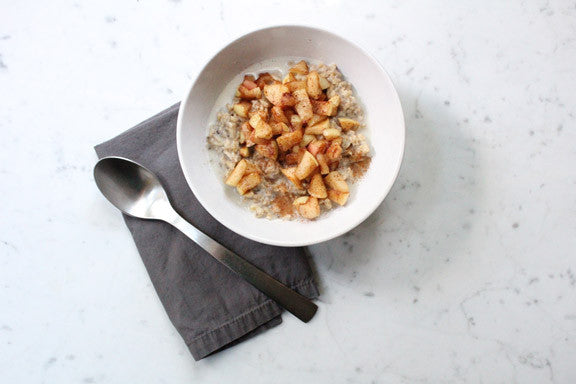Two Nutrition Tips for the New Breastfeeding Mom
By Ashley Wood, in support of the partnership between Bravado Designs and Breasthealth.org

Let’s face it - breastfeeding and pumping are tough work! Breastfeeding alone burns about 300-500 calories per day, which can leave mama feeling famished. As a new mother to a six-month-old, exclusively breastfed baby girl, I know this to be true. Since she’s been born, I’ve been hungrier than ever before. I begin the day with two breakfasts, followed by a snack, then lunch, another snack, dinner, and another snack before bed. And sometimes I eat more snacks throughout the day, especially if my daughter is nursing more than usual.
To make sure that I’m eating foods that help increase breast milk production, it’s my top priority to keep my body not only well-fed but properly nourished, also. To do this, I keep two big food groups fully-stocked in my kitchen for easy access, healthy choices.
Fresh Fruits and Vegetables
Keeping the fridge and pantry full of healthy, lactogenic foods (food that helps increase breast milk supply) make it a lot easier to grab a healthy bite when you have a moment to munch, all the while increasing your breast milk production!
Fresh fruits and vegetables (preferably organic) fit the bill for this and are excellent options to stock up on. They’re loaded with vitamins, minerals, healthy fibers and antioxidants to nourish your hard-working body as well as your baby’s growing body.
Best foods to fill your shopping cart?
- Carrots, yams, and beets are high in beta-carotene (vitamin A), a vitamin that’s needed in greater amounts to promote lactation.
- Dark leafy greens, like kale, spinach, arugula, Swiss chard, spinach and collard greens contain minerals, vitamins, enzymes and phytoestrogen which also helps the body produce more breast milk.
- It’s also important to incorporate foods that are high in monounsaturated fats (healthy fats, found in foods such as avocados) that help mom absorb vitamins A, D, E and K— these are crucial vitamins to help the baby develop healthy vision, bones, skin and blood clotting!
Whole Grains and Legumes
Other fridge staples? Galactagogues, better known as foods that increase the flow of a mother’s breast milk, such as oats, millet, rice, barley, lentils, chickpeas, and beans.
Why?
- Oats are especially high in iron, and since anemia and low iron levels can result in decreased milk supply, porridge makes for a perfect breakfast or snack!
- Almonds, cashews and macadamia nuts also support breast milk production and make for great grab-and-munch snacks.
- Walnuts contain two types of omega-3 fatty acids that help baby’s growth, brain and vision development and immunity.
Looking for a delicious quick and easy breakfast that incorporates some of these staples? I rely on my Morning Maple Porridge as my go-to breakfast staple that is both nutritious and delicious.

- 1 cup rolled oats
- 1 cup + 1 Tbsp unsweetened almond milk
- 1 Tbsp coconut sugar (plus more for sprinkling on top)
- 2 tsp of ground cinnamon, divided
- 1 tsp pure maple syrup
Rinse the oats in a colander very well before using them. Add the oats, 1 cup of almond milk, coconut sugar and 1 tsp of cinnamon to a pot. Heat the oats over medium heat and whisk until they're sticky. Remove the oats from the heat and transfer to serving bowls. Add 1 Tbsp of cold almond milk, 1 tsp ground cinnamon, maple syrup and a wee bit of coconut sugar on top. You may also add any other toppings of your choice. Sometimes I like to add fruit to this bowl (strawberries, banana slices, apples with cinnamon) and other days, I keep it simple and eat it as is.
Looking to start meal planning? Check out my tips here for more inspiration.
Have healthy tips that you would like to share? Leave them in the comments below!














